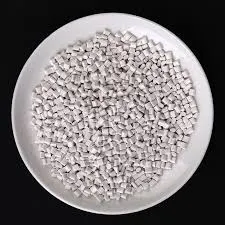Water and Wastewater Treatment Chemicals Essential Components for Clean Water
Water is a vital resource for all forms of life on Earth, and its availability in clean and safe conditions is crucial for human health and environmental sustainability. However, as urbanization increases and industrial activities expand, the quality of water sources is often compromised by pollutants. To combat this issue, the treatment of water and wastewater has become an indispensable part of modern society, involving a variety of chemicals that facilitate the purification process. This article explores the essential role of water and wastewater treatment chemicals, their types, applications, and impact on public health and the environment.
Understanding Water Treatment Chemicals
Water treatment chemicals are substances used to remove contaminants from water, making it safe for drinking, industrial use, and recreational purposes. Similarly, wastewater treatment chemicals are used to treat water that has been used and is returning to the environment. These chemicals are critical for processes such as coagulation, flocculation, disinfection, and nutrient removal.
1. Coagulation and Flocculation Agents One of the first steps in both water and wastewater treatment involves the removal of suspended particles. Coagulants, such as aluminum sulfate and ferric chloride, are added to cause tiny particles to clump together, forming larger aggregates—or flocs. These flocs can then be easily removed from the water through sedimentation or filtration. This process is vital for improving water clarity and reducing turbidity.
2. Disinfectants Ensuring that water is free from pathogenic microorganisms is crucial for public health. Disinfectant chemicals such as chlorine, ozone, and ultraviolet (UV) light are commonly used to kill or inactivate harmful pathogens. Chlorination, one of the most traditional methods, involves adding chlorine to water, which not only disinfects but also helps to maintain residual protection against future contamination. However, the formation of trihalomethanes (THMs) during chlorination has raised concerns, leading to increased use of alternative disinfectants like ozone and UV light.
3. pH Adjusters The pH level of water can significantly impact its treatment processes and the overall efficiency of chemical reactions during treatment. Chemicals such as hydrochloric acid (for lowering pH) and sodium hydroxide (for raising pH) are frequently used to adjust water's acidity or alkalinity. Maintaining optimal pH levels is crucial for maximizing the effectiveness of disinfection and coagulation processes.
water and wastewater treatment chemicals

4. Nutrient Removal Chemicals In wastewater treatment, controlling nutrient levels, particularly nitrogen and phosphorus, is essential to prevent eutrophication in receiving water bodies. Chemicals such as ammonium sulfate and sodium nitrate are used for nitrogen removal, while ferric chloride or alum can help bind phosphorus, facilitating its removal during the treatment process.
5. Flotation Agents and Surfactants Flotation processes often involve surfactants that help separate oil and grease from water, particularly in industrial wastewater. These chemicals help enhance the efficiency of removal systems by reducing surface tension and allowing for better separation of contaminants.
Environmental and Health Considerations
While water and wastewater treatment chemicals play a vital role in ensuring clean water supply and effective waste management, their usage must be carefully managed. Over-reliance on certain chemicals can lead to environmental issues, such as the accumulation of toxic byproducts and the disruption of aquatic ecosystems. Furthermore, workers handling these chemicals need to be trained in safety protocols to prevent health hazards associated with chemical exposure.
Conclusion
The importance of water and wastewater treatment chemicals cannot be overstated. They are essential for safeguarding public health, protecting ecosystems, and enabling the sustainable use of water resources. As technology progresses, the development of more efficient and environmentally friendly treatment options continues to be a priority, ensuring that we can maintain a clean and safe water supply for future generations. Understanding the roles and impacts of these chemicals is vital for anyone involved in water management and environmental conservation.

